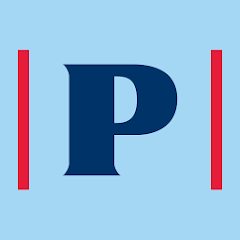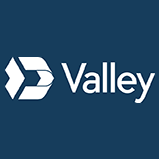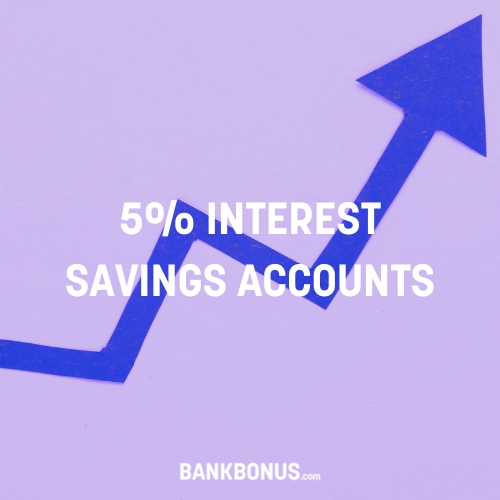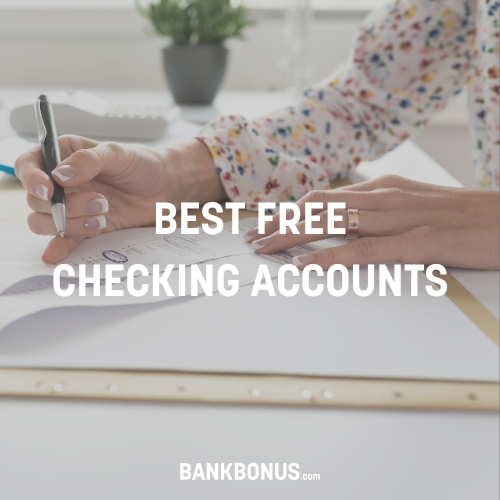A high-yield online savings account is a great asset that can help you reach your savings goals quickly and safely.
The best high-yield savings accounts offer competitive interest, minimal fees, and user-friendly account features.
We’ve compared dozens of financial institutions to provide recommendations for your online savings account, zeroing in on accounts offering the best rates and fewest account fees.
Today’s Best High-Yield Savings Rates
| Product | APY | Min Deposit |
|---|---|---|
| Varo Bank Savings Account |
up to 5.00% APY | $0 |
| LendingClub Bank High-Yield Savings |
up to 4.50% APY | $100 |
| Barclays Bank Barclays Tiered Savings |
up to 4.40% APY | $0 |
| Bread Financial High-Yield Savings |
4.40% APY | $100 |
| Western Alliance Bank High Yield Savings Premier |
4.40% APY | $0 |
| Valley Bank High Yield Savings |
4.39% APY | $0 |
| Bask Bank Bask Interest Savings |
4.35% APY | $0 |
| EverBank Everbank Performance℠ Savings |
4.30% APY | $25 |
| CIT Bank Platinum Savings |
up to 4.30% APY | $100 |
| Forbright Bank Growth Savings |
4.25% APY | $0 |
| UFB Direct UFB Portfolio Savings |
up to 4.21% APY | $0 |
| Live Oak Bank Live Oak personal savings |
4.20% APY | $0 |
| Upgrade Premier Savings |
4.14% APY | $0 |
| CIT Bank Savings Connect |
4.00% APY | $100 |
| Synchrony Bank High-Yield Savings |
4.00% APY | $0 |
Best High-Yield Savings Accounts for March 2025
Here are the best high-yield online savings accounts today:
- CIT Bank Platinum Savings Connect
- Forbright Bank Growth Savings
- UFB High Yield Savings
- Raisin Savings Account
- Barclays Tiered Savings
- Bask Bank Interest Savings Account
- LendingClub High-Yield Savings
- Popular Direct Select Savings
- Bread Savings High-Yield Savings
- Valley Direct High Yield Savings
- Ally Bank Savings Account
- Synchrony Bank High Yield Savings
1. CIT Bank Platinum Savings 
- APY: up to 4.30%
- Maintenance fee: $0.00
- Minimum balance: $0.00
- Minimum opening deposit: $100
- ATM card: No
CIT Bank’s Platinum Savings account offers an APY rate of up to 4.30% on balances of $5,000 or more.
Interest is compounded daily, helping you earn the maximum amount of money possible. CIT also includes a calculator on its website to help you gauge how much time and money you’ll need to reach your savings goals.
You can open an account directly using the link above without having to visit a branch. You’ll need to supply some personal information, including your address, phone number, email address, and SSN (Social Security Number).
Once the application is complete, you’ll need to fund your account with a minimum deposit of $100. You can mail in a physical paper check, submit a wire transfer, or use an electronic transfer to fund the account.
Learn More:
2. Forbright Bank Growth Savings 
- APY: 4.25%
- Maintenance Fee: $0.00
- Minimum balance: $0.00
- Minimum opening deposit: $0.00
- ATM card: No
Forbright Bank, formerly known as Congressional Bank, operates 2 branches in the D.C. area in Maryland. Its mission is centered around supporting renewable energy projects and promoting energy efficiency and is fossil-free certified.
They are a full service institution offering a variety of financial products, including checking, high-yield savings, certificates of deposit (CDs), and money market accounts. Where they really shine in terms of APY is their Growth Savings account.
Forbright’s Growth Savings account comes with no minimum balances, no fees and is FDIC-insured. You can open an account online in minutes.
All in all, Forbright’s HYSA is one of the most competitive options being offered.
3. UFB Portfolio Savings Account 
- APY: up to 4.21%
- Maintenance Fee: $0.00
- Minimum balance: $0.00
- Minimum opening deposit: $0.00
- ATM card: Yes
UFB Direct is a growing division of Axos Bank that specializes in three products— mortgages, checking and savings accounts.
This hyperfocus, combined with the low overhead that comes with being an online-only bank, allows UFB Direct to consistently offer competitive rates.
There are no minimum balance requirements to earn the highest APY, and the account has no monthly maintenance fees. Unlike some competitors, UFB Direct gives you ATM access and a complimentary ATM card.
If you’re looking for a place to park short-term cash that’s FDIC-insured and offers consistently high rates, UFB Direct is a solid choice.
Learn More:
4. Raisin Savings Accounts 
- APY: up to 4.39%
- Maintenance fee: $0.00
- Minimum balance: $0.00
- Minimum opening deposit: $0.00
- ATM card: No
Raisin is a savings platform that provides online-only high yield savings accounts for dozens of banks. It’s that’s aimed at making personal finance simple, with easily manageable savings accounts.
You’ll have 24/7 access to your funds through the Raisin platform like most traditional banks.
You can also rest assured that your funds are FDIC insured.
5. Barclays Tiered Savings 
- APY: up to 4.40%
- Maintenance fee: $0.00
- Minimum balance: $0.00 (Note: Min balance required for higher APYs)
- Minimum opening deposit: $0.00
- ATM card: No
Barclays Tiered Savings account is designed to help account holders reach their savings goals without any roadblocks. It has a tiered APY and no monthly maintenance fees.
The current tiered APY rates by deposit amount are:
| Deposit Amount | Savings APY |
|---|---|
| $0 – $249,999.99 | 4.15% |
| $250,000+ | 4.40% |
There’s also APY available on lower deposit amounts, making it a viable option if you’re looking to open an online savings account on a budget.
If you’re saving for something specific, you can use the Barclays Savings Assistant. This convenient tool tells you how much time you need to reach your goal, taking into account the APY being offered by the bank.
Interest on the account is compounded daily and paid out to the account once a month. The account comes with several features, including secure online access, direct deposits, and the ability to transfer funds to and from other bank accounts.
Learn More:
6. Bask Bank Interest Savings Account
- APY: 4.35%
- Maintenance fee: $0.00
- Minimum balance: $0.00
- Minimum opening deposit: $0.00
- ATM card: No
Bask Bank is an online bank that exclusively offers savings products, with a high-yield savings account, mileage rewards savings account, and CDs.
All of Bask’s accounts are insured for up to $250,000 through Texas Capital Bank, Member FDIC.
The Bask Interest Savings Account offers a competitive 4.35% APY on all account balances, so you don’t have to meet any minimums to earn higher interest rates.
You can link two external accounts to your Bask savings accounts and make up to 6 transfers totaling $150,000 – $300,000 per month as a new customer.
One drawback to consider is that Bask doesn’t have any physical branches or provide an ATM card, which some competitors do.
Learn More:
7. LendingClub Bank High-Yield Savings 
- APY: up to 4.50%
- Maintenance fee: $0.00
- Minimum balance: $0.00
- Minimum opening deposit: $100
- ATM card: Yes
Starting as a popular lender, LendingClub now offers a range of personal, business, and commercial financial products. One of its most competitive products is its high-yield savings account, which offers up to 4.50% APY on your entire account balance.
There are no monthly maintenance fees to worry about, but you’ll have to fund your account with a minimum of $100 to start earning interest.
You can apply online in a few minutes and transfer funds to your account using your debit card or an existing bank account.
LendingClub is one of a select group of online banks that provides a free ATM card, allowing you to access funds from your savings account at ATMs. The bank is also part of the MoneyPass and SUM networks, providing widespread ATM access.
8. Popular Direct Select Savings Account 
- APY: 4.60%
- Maintenance fee: $0.00
- Minimum balance: $0.00
- Minimum opening deposit: $100.00
- ATM card: No
While you might not be familiar with the name, Popular Direct is a subsidiary of Popular Bank, one of the 50 largest banks in the nation.
Popular Direct is worth considering if you’re after high-interest rates and don’t mind paying a minimum deposit. While the account requires an initial deposit of $100, there are no ongoing account minimums or monthly maintenance fees.
Compound interest accrues daily. While rates are subject to change, Popular Direct currently pays the same rate on all account balances once you meet the $100 minimum deposit requirement.
Just note that Popular Direct does charge some fees, such as a $25 early closure fee for accounts closed within 180 days, and a $10 fee for overdrafts.
9. Bread Savings High Yield Savings 
- APY: 4.40%
- Maintenance fee: $0.00
- Minimum balance: $0.00
- Minimum opening deposit: $100
- ATM card: No
Formerly called Comenity Direct, Bread Savings is another online bank that squarely focuses on savings accounts and CDs.
Backed by Comenity Capital Bank, it offers a 5% interest savings account with no monthly fees or ongoing minimum balance requirements. However, the account does require an opening balance of $100.
Interest on the account compounds daily and is paid out monthly, which is standard for most online high-yield savings accounts.
You can enjoy free ACH transfers and incoming wire transfers, but there’s a $25 fee for outgoing wire transfers and a $15 fee for official check requests.
Learn More:
10. Valley Direct High Yield Savings 
- APY: 3.75%
- Maintenance Fee: $0.00
- Minimum balance: $0.00
- Minimum opening deposit: $1.00
- ATM card: No
Founded in Wayne, New Jersey, in 1927, Valley National Bank offers a wealth of personal and business bank accounts, as well as loans and financial planning services.
The FDIC-insured bank provides competitive high-yield savings and CDs nationwide through its digital banking platform, Valley Direct. You can enjoy 3.75% APY with Valley Direct’s savings account.
There are no minimum balance requirements or monthly fees. Once you deposit your first dollar, you’ll start earning money.
You can open a Valley Direct High Yield Savings Account online in less than five minutes. If you’re 18 or older, you can apply with a valid government ID and your Social Security Number.
All in all, Valley Direct’s HYSA is one of the most competitive options being offered directly through a traditional bank.
Learn More:
11. Ally Bank Online Savings Account 
- APY: 3.70%
- Maintenance fee: $0.00
- Minimum balance: $0.00
- Minimum opening deposit: $0.00
- ATM card: No
Ally is one of the best online banks, offering checking and savings accounts, money market accounts, and CDs, along with loans, credit cards, and investing accounts.
Ally Bank’s Online Savings Account is a completely free online savings account, with no monthly fees, expedited ACH transfer fees, incoming wire fees, or official/cashier’s check fees.
There’s also no minimum balance to maintain, making it ideal for first-time savers looking to grow their savings. To help you save money, the account uses buckets, which serve as mini-accounts for specific goals.
When you open an Ally Checking account, you can use round-ups to automatically transfer extra money from your spending to your savings account. You also get access to a free ATM card with an Ally checking account.
Learn More:
12. Synchrony Bank High Yield Savings 
- APY: 4.00%
- Maintenance fee: $0.00
- Minimum balance: $0.00
- Minimum opening deposit: $0.00
- ATM card: Yes
Synchrony Bank’s High Yield Savings account offers a high APY, regardless of your balance. There are no maintenance fees or minimum balance requirements, but your account may be closed if it’s left with a $0.00 balance for more than 60 days.
You can access your money via online banking, mobile banking, or an ATM. If you opt for an ATM card, Synchrony will reimburse up to $5.00 per statement cycle of out-of-network ATM charges. The bank allows you to make $1,000 of ATM withdrawals per day.
Opening a savings account with Synchrony is easy and can be done fully online. It’s also worth noting that Synchrony is an FDIC member, so your funds are insured up to $250,000.
Learn More:
What Is A High Yield Savings Account?
High-yield savings accounts are savings accounts that earn higher APY than traditional savings accounts. For reference, the national average for traditional savings accounts hovers around 0.47% APY, on average at the time of writing.
High-yield savings accounts benefit from compound interest, so you earn interest on your principal and on interest that’s accumulated.
As both brick-and-mortar and online banks continue to up their game to remain competitive, many banks offer a high APY rate, even on their checking accounts.
High-yield saving accounts tend to offer the highest rates on all balances, while a lot of checking accounts cap APY at a certain dollar amount. Regardless, it can’t hurt to have a high-yield checking account as well.
Pros and Cons of a High-Yield Savings Account
Consider some of the biggest advantages and disadvantages of high-yield savings accounts:
Pros
- Provide higher interest rates than traditional savings accounts
- Typically offered by reputable financial institutions with FDIC insurance
- Offer easy access to funds without penalties or restrictions
- Considered low-risk investments since the principal isn’t subject to market fluctuations
Cons
- Have lower potential reward than higher-yield investments like stocks or bonds
- May have minimum balance requirements to qualify for higher interest rates
- Interest rates offered on high-yield savings accounts can fluctuate over time
- Often have limitations on the number of monthly transactions
What to Look for In a High-Yield Savings Account
With many banks and credit unions offering very competitive rates, choosing the right bank for you can be hard work.
While great rates are important, there are other factors to consider. Account features such as accessibility and service fees can ultimately eat into your savings, so make sure the bank and account you choose are aligned with your savings goals.
Other features such as account debit cards, mobile check deposits, and ATM accessibility are also worth considering. Similarly, consider whether or not you can make wire transfers, and look into how overdrafts are handled.
Always look for accounts that are FDIC or NCUA insured. While it might not be an everyday occurrence for a bank or credit union to go under, it’s not unheard of.
Lastly, remember that even a high-yield APY rate probably won’t earn you enough money to quit your job. The important thing is to use your new account wisely.
How to Open a High-Yield Savings Account
High-yield savings accounts are designed to be user-friendly and easy to open. While the process can vary from one bank to the next, here are the general steps you can expect to take to open a high-yield savings account:
- Research: Start by researching banks and financial institutions that offer high-yield savings accounts. Look for reputable institutions with competitive interest rates and low fees. Read reviews and compare features.
- Understand requirements: Once you’ve selected a bank, check the requirements for opening a high-yield savings account. For example, there may be minimum deposit requirements and eligibility criteria, such as being a US citizen or resident.
- Gather documents: Collect the necessary documents required to open the account. That might include a valid ID like your driver’s license or passport, proof of address (such as a utility bill), and your Social Security number or ITIN.
- Apply online: Most banks allow you to open a high-yield savings account online. Visit their website or app and follow the step-by-step instructions to complete your application.
- Agree to terms: Review the terms and conditions of the account carefully. Agree to the terms by checking the appropriate box and acknowledging any fees or charges associated with the account.
- Fund your account: Once your application is approved, you’ll need to fund your new account. Many banks let you transfer funds electronically from an existing bank account or send in a check.
How to Get the Most Out of Your High-Yield Savings Account
High-yield savings accounts offer a relatively high-interest rate on your balance. The more you save, the more money the interest rate is going to earn you.
Here are a few tips to maximize your earnings:
- Take advantage of compound interest: One of the best features of APY is compounding interest— the interest you earn will earn you more interest as long as it remains in your account.
- Save strategically: Setting up a recurring direct deposit and avoiding unnecessary withdrawals can help you maximize your return. Good budgeting and planning go a long way in helping you make sure that the money you save stays saved and continues to grow.
- Understand withdrawal limits: Regulation D was a regulation by the Federal Reserve Board that limited savings withdrawals to 6 a month. While this regulation was removed in 2020, some banks have kept the limits it imposed. While the withdrawal limit may seem like a big restriction, planning, and budgeting can help you stay within limits.
- Compare APY: APY (Annual Percentage Yield), is the rate of return you can expect to make in 1 year. Many banks quote their APY rate against the national average using research from the FDIC or private firms. Take the time to compare the actual rates offered by different banks and credit unions and keep fees and minimum balance requirements in mind.
Learn More:
- What Banks Offer 3% Savings Accounts?
- Best 5% Interest Savings Accounts
- Do Banks Offer 6% Interest Savings Accounts?
- Do Banks Offer 7% Interest Savings Accounts?
Alternatives to High-Yield Savings Accounts
Here’s an overview of some of the top alternatives to high-yield savings accounts to consider:
- High-yield Savings Account vs. Traditional Savings Account: Traditional savings accounts offer significantly lower interest rates than HYSAs. You can usually find these accounts at traditional brick-and-mortar banks and credit unions that can’t always keep up with the low fees and high interest of online banks.
- High-yield Savings Account vs. Certificates of Deposit (CDs): CDs are a secure investment option offered by banks and credit unions. They typically offer higher interest rates than traditional savings accounts, but with a catch— you have to leave your money untouched for a set period of time, known as the maturity period.
- High-yield Savings Account vs. Checking Account: Checking accounts are designed for transactions, allowing you to make more withdrawals and transfers than some savings accounts. On the other hand, high-yield savings accounts tend to pay higher interest rates and are a better fit for storing excess cash.
- High-yield Savings Account vs. Money Market Accounts: A money market account is a type of deposit account that usually offers higher interest rates than traditional savings accounts. These accounts often require a higher minimum balance to earn interest but give you more flexible access to your funds.
- High-yield Savings Account vs. Treasury Securities: The U.S. Department of the Treasury offers various types of government securities, such as Treasury bills, notes, and bonds. These investments are considered safe and can provide a higher yield than traditional savings accounts. However, they might require a higher initial investment and have specific maturity dates.
- High-yield Savings Account vs. Corporate Bonds: Corporate bonds are debt securities issued by companies to raise capital. These bonds usually offer higher interest rates than savings accounts and can be a suitable alternative for fixed-income investments. However, investing in corporate bonds involves credit risk, as the issuing company may default on its payments.
Frequently Asked Questions
How safe are high-yield savings accounts?
High-yield savings accounts are safe as long as they are insured by the FDIC or the NCUA. Online banks usually work with traditional banks that are FDIC members. In most cases, accounts are insured up to a maximum of $250,000, with some banks offering additional coverage
You’ll also need to make sure that any mobile banking app or online banking website is secure. Most banks will explain what kind of security they implement.
Can you lose money in a high-yield savings account?
It’s next to impossible to lose money in a high-yield account. The money is not invested, which means the value of your initial deposit can’t decrease.
Accounts are also insured by the FDIC, usually up to $250,000. This means that if something happens to the financial institution, you can get your money back up to the insured amount.
How much interest will I get on $1000 a year in a savings account?
This will largely depend on the effective interest rate applied to your savings and how it is applied. Most banks compound interest daily and pay it out to the account monthly.
This means that if you were to deposit $1,000 in an account with an APY of 0.50% that’s compounded daily, you’d make about $5.00 in a year.
Are high-yield savings accounts worth it?
High-yield savings accounts offer one of the best ratios between risk and return. While the return might not be as high as you could potentially make by investing the money in the stock or forex market, the risk is also much lower.
The return rate is also higher than you would make on a normal savings account without any extra risk. This makes this type of account ideal for saving money, from growing your emergency fund to saving for a down payment on a mortgage.
Learn More:
- Are High Yield Savings Accounts Worth It? (Pros & Cons)
- Best Savings Account Bonus Offers & Promotions
Who Should Get an Online High-Yield Savings Account?
A high-yield savings account can help you grow your savings much faster than a traditional savings account with less risk than investing in speculative markets like stocks and foreign exchange.
It’s an ideal account if you want to maximize your savings potential. High-yield savings accounts are particularly beneficial for people who have a substantial amount of money they can set aside and are willing to leave untouched for a specific period.
And if you have long-term financial goals, like saving for a down payment on a house or funding your child’s education, this type of account can be majorly beneficial. Bottom line—If you want to optimize your savings and increase your overall financial stability, you should consider opening a high-yield savings account.
Our Methodology
To give our readers a trustworthy accurate list of the best high-yield savings accounts, the BankBonus editorial team compared dozens of traditional banks, online banks, fintechs, and credit unions across several metrics.
Every account we feature is backed by FDIC or NCUA insurance. We prioritized accounts with high-interest rates, no monthly account fees, and low or no minimum balance or deposit requirements. Accounts are also widely available to most customers nationwide.
We also noted each account’s withdrawal and transaction limits, additional fees, and account features such as ATM access and the ability to make mobile deposits. Additionally, we factor in customer experience, using third-party reviews and app store ratings for each bank.





Comments are closed.
Comments are closed here.